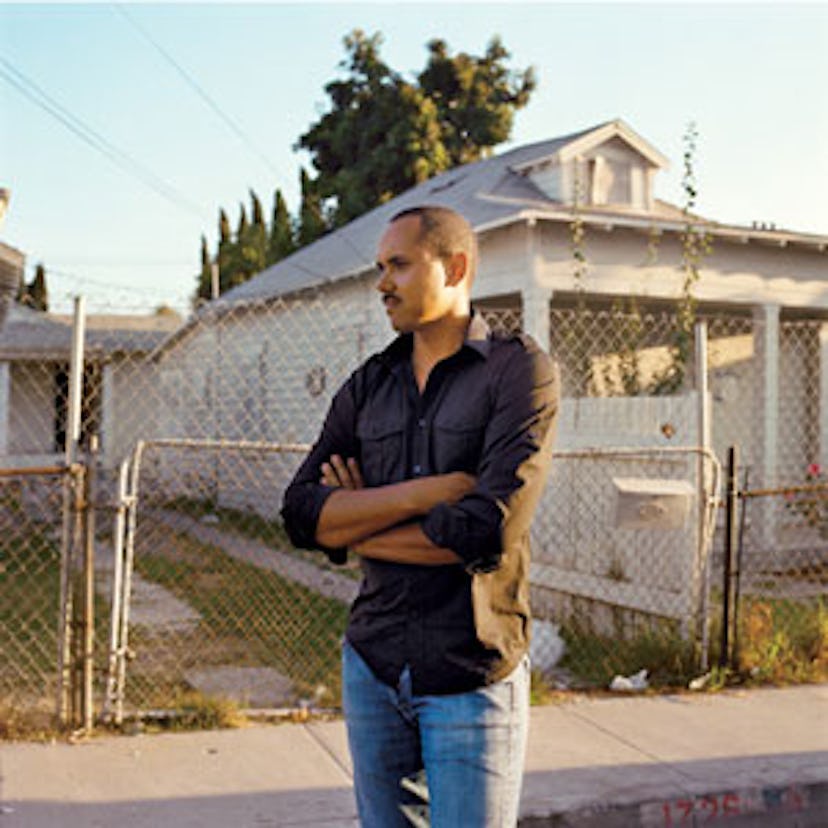Young Artists: Edgar Arceneaux
With buzz behind them and talent to spare, these six up-and-comers may be the art world's next big names.

When Edgar Arceneaux was born, in Los Angeles in 1972, he was named after his grandfather, a painter. As Arceneaux grew, his family noted his uncanny resemblance to his namesake in his mannerisms and the way he talked—and in his predilection for art. “Early in my life I was introduced to this paradox,” he says, placing his fingertips together and gazing at the connections. “I was trying to figure out—how could I be me and be him at the same time? How can I be me and not be me simultaneously?”
It is an apt query coming from this highly conceptual artist. In his work, Arceneaux, who still lives in L.A., struggles with questions about problematic intersections—of the past and the present, of history and memory. For one of his early shows, “Drawings of Removal,” held at the Studio Museum in Harlem in New York and the Hammer Museum in L.A., Arceneaux turned the spaces into studios in which he drew, erased, redrew and dissected drawings, mimicking the evolution of memories. Another exhibit featured graphite-on-vellum drawings of sets of three images; one included the faces of Mr. Spock, Tuvok (the first Vulcan of color on Star Trek) and Tupac Shakur, the late rapper. Initially, Arceneaux was interested in only the Star Trek characters. “But I realized that by adding Tupac into the sequence, it created a set of relationships that you couldn’t naturally resolve,” he says. “You couldn’t come up with one totalizing narrative to tie them all together. It was a way of wrestling with randomness.”
Arceneaux changes mediums relentlessly, moving from drawing to video to sculpture to sound installations. “Once Edgar gets too proficient with a medium, he feels pressure to leave it behind,” says art historian and critic Julian Myers, who is working with Arceneaux on a book about the 1967 Detroit riots. “A lot of artists who arrive at a process that works stick to it resolutely. Edgar is willing to tear up the plans and start something new.”
One such endeavor is the Watts House Project, which Arceneaux joined in 1996. Now the director, he approaches the neighborhood-revitalization program as an extension of his art. By inviting local artists to collaborate with the residents on revamping houses, he has corralled creative energy for the public good. “Part of it is about the challenge of what art could be,” he explains. “We understand art in the fixed realm of things that can be sold and exchanged. But in this project, we’re not generating any objects; the art is in that space where people start to imagine other possibilities. The idea is that art has the power to change things,” he concludes. “Artists, you know, are amazing problem solvers.”